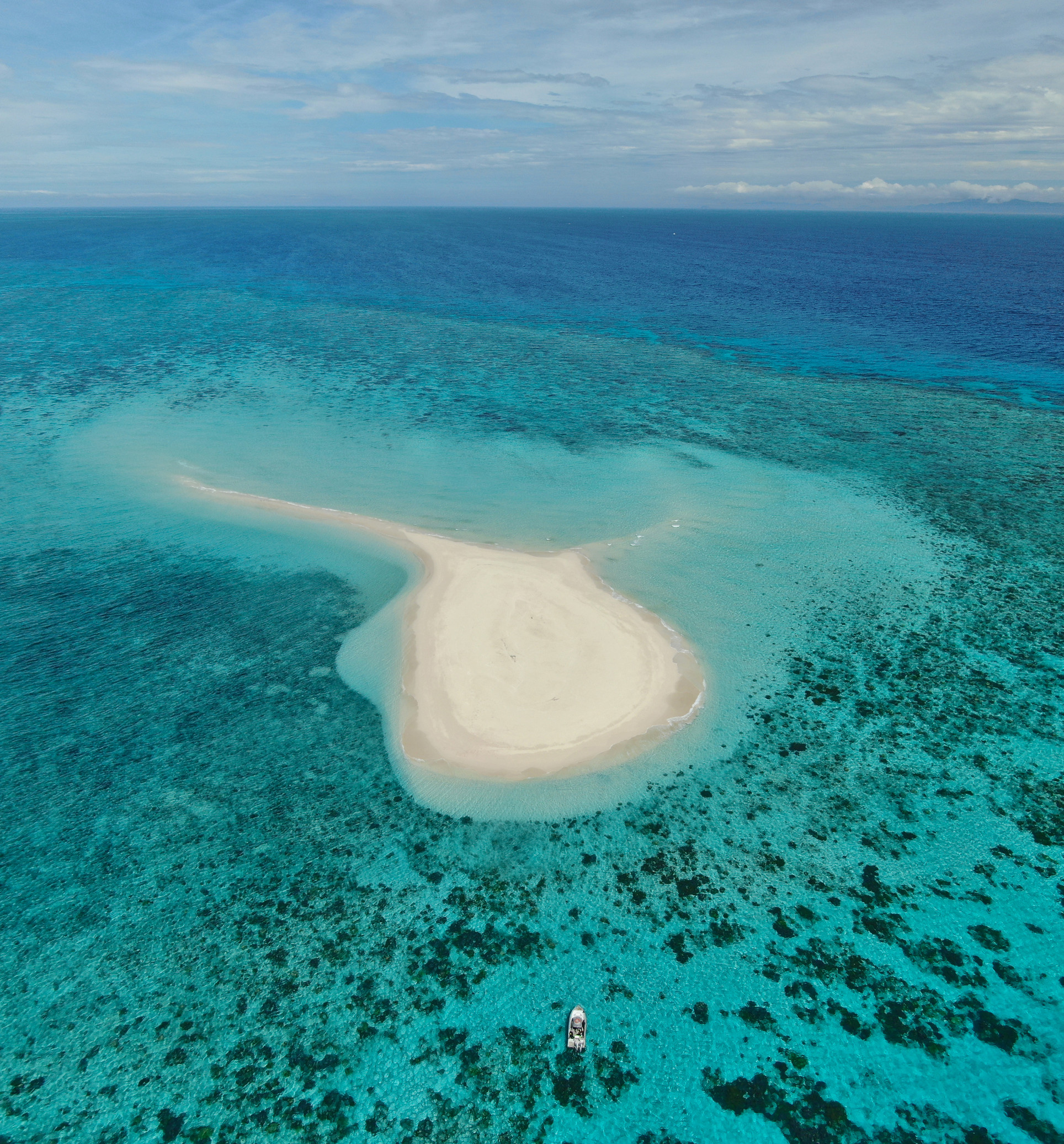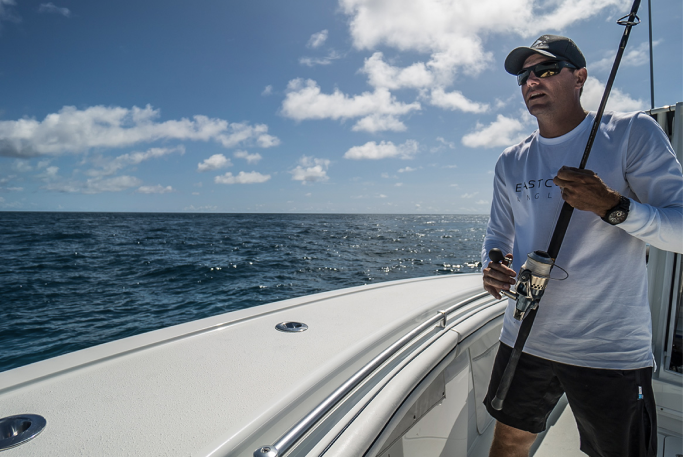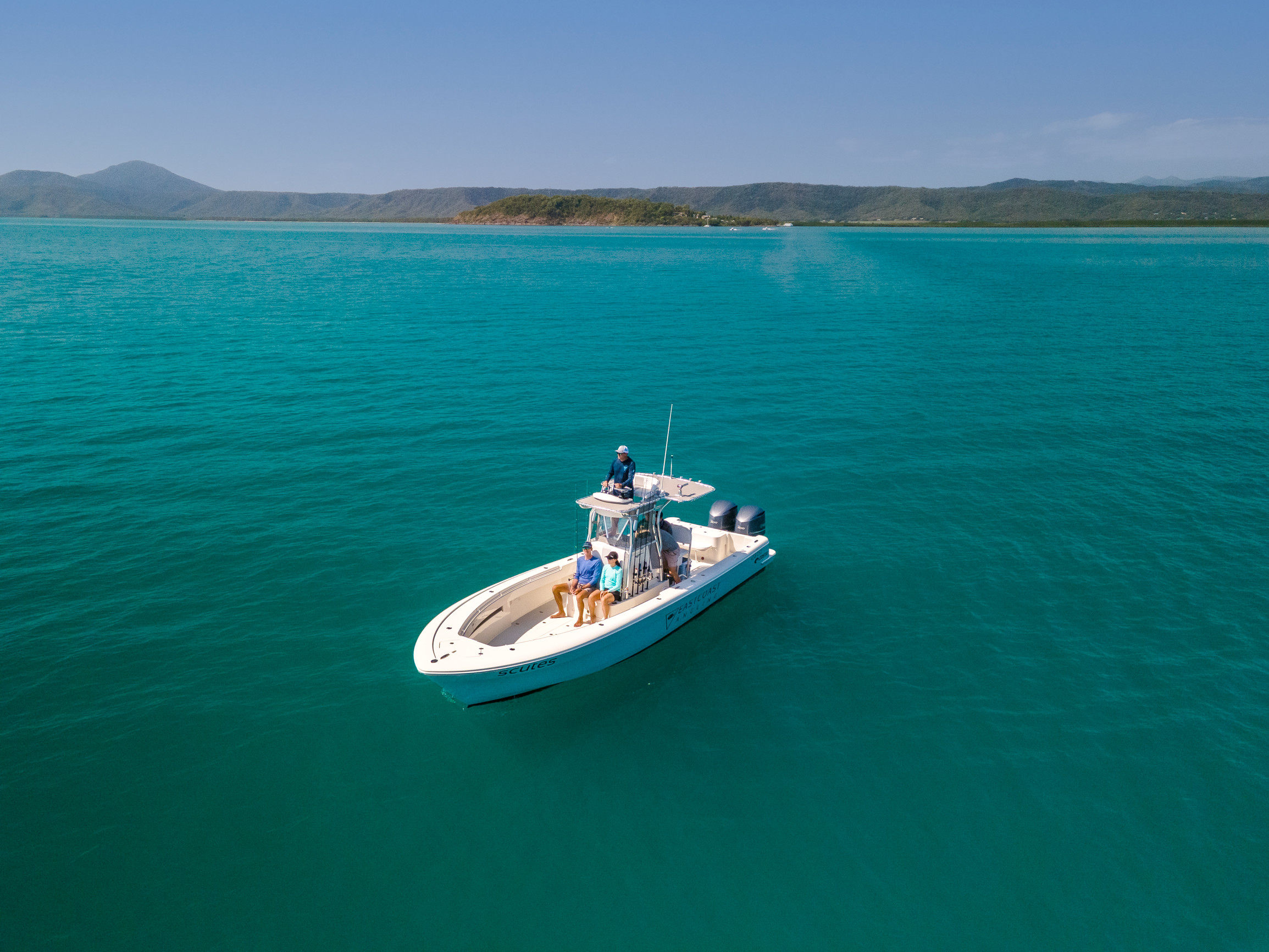A local's guide to fishing on the Great Barrier Reef with Nick Milford from East Coast Angling
FEATURE
By Jemma Fletcher
As any great fishing interview should take place (on a boat in the Coral Sea heading towards Lizard Island), we spoke with Nick Milford, Great Barrier Reef local and founder of East Coast Angling.
Based in Port Douglas, East Coast Angling is Australia's first Eco-Certified fishing charter business, known for its strong ethos towards catch-and-release sport fishing to promote a sustainable fishery for future generations
Not only does Nick have decades of professional sportfishing experience, but he’s passionate about educating visitors to the World Heritage-listed Great Barrier Reef about the best fish handling procedures to ensure the best chance of survival on release – there’s no better rewarding feeling for an angler than to release a fish to fight another day.
From favourite fishing spots and what’s on his must-catch list, to the GBR Reef Guardian Fisher program and sustainable practices on board, we’re hooked.
You've been in the charter industry for over 20 years, up and down the east coast of Africa, across the Atlantic and around 23 other countries. What's so special about The Great Barrier Reef?
The Great Barrier Reef has always had a special place in my heart and a trump card on the other places. When I’m fishing around the world and travelling to lots of countries, there’s just no other place with the same level of fishery management than the Great Barrier Reef, which down the track, affects all different species of fish.
As one of the seven natural wonders of the world and a breeding ground for hundreds of different species of fish, as well as the way the Great Barrier Reef Marine Park Authority contributes to the abundance of fish, is what makes the Great Barrier Reef such a wonderful place.
The Great Barrier Reef is home to a vast variety of marine creatures, making it a prime choice for enthusiastic fishers from all over the world. Where on the reef is your favourite fishing spot and why?
Oh, that’s a tough one. We've been fortunate enough to fish the entire stretch of the Great Barrier Reef from down south in Bundaberg – which they call the Swain Reefs – right up to the tip of the Torres Strait, and also out east into the Commonwealth Marine Reserve known as the Coral Sea. All of these locations have huge differences in terms of species. There are different landmarks, different ways to fish, and different types of fish; and as the migratory fish are moving through, it offers different opportunities and different sites.
I think the Coral Sea is a pretty special place too. Those volcanic atolls out in the Commonwealth Marine Reserve are pretty special once you get out there. The water clarity is just something crazy. And then there are the northern stretches of the Great Barrier Reef and the Torres Strait, and meeting with local Indigenous groups up there – seeing how they live out on the islands, meeting with them and making friendships along the way is part of the adventure.
What’s on your must-catch list when you’re out there?
There are two different types of fishing we do – topwater casting and saltwater fly fishing. For topwater casting, the main draw card species for everybody is the giant trevally, a formidable sport fish (explosive on the surface), which is in abundance on the reef. They're not considered good table fish, so they're not commercially harvested – which means in terms of sports fishing, it’s a very sustainable species. We have a massive abundance of these species of fish, and you can't catch the numbers that we have here on the reef, anywhere else in the world.
East Coast Angling is recognised as a GBR Reef Guardian Fisher. What does this mean exactly?
The Reef Guardian Fisher program was initially rolled out by the Great Barrier Reef Marine Park Authority and it was originally designed to get the traditional type of commercial fishermen to publicly display and advertise sustainable methods of catching fish and harvesting large quantities of fish, which in turn creates awareness for the general public.
However, it’s now also for the knowledge of commercial fishermen. We consider ourselves commercial fishermen – or I do personally – and I feel a sense of responsibility to spread the news about sustainable practices. We're the only charter company to be a part of the Reef Guardian Fisher program and we teach other commercial fishermen that even if you don't have a net, there are ways you can sustainably take out people and catch fish day after day.
You offer sportfishing tours that practice predominately catch and release – what are the benefits of this approach?
As mentioned, we offer saltwater fly fishing, which means we specialise in catching fish on top water (targeting the fish in shallow water). So, in one of our experiences, you'll walk around in really shallow water to target fish, and then you’ll also throw lures on the surface of the water to get their attention.
However, if you’re bottom fishing and you drop a bait or a lure down to 30 or 50 metres and hook a fish, many things happen that determine whether that fish survives or not, including a thing called barotrauma. If the fish is hooked down deep, certain species suffer from it more than others. Traditionally, the demersal fish or the bottom-dwelling fish suffer quite heavily from it as the stress from being hooked means they don't have the time to change or equalise their swim bladder, so as they ascend at a rapid rate, their swim bladder expands and causes barotrauma – which essentially puts pressure on their internal organs and causes them to rupture.
So, if you’re bottom fishing and bring up a fish, and it's a protected species, usually it's dead anyway, so you're affecting the overall biomass of that species just by bottom fishing. And if it's undersized, you have to let it go, but it's dead anyway, so again, you're affecting the biomass of that species.
Another thing with bottom fishing is going to the same bottom fishing spots day in and day out. There's a school of fish there just milling around, doing their thing, and when you drop a bunch of baits down, it causes a big chum line or a smell line, which not only attracts the fish but also attracts sharks. When you hook these fish, it causes them to be eaten by sharks. More sharks are a hot topic at the moment amongst bait fishermen, but in my opinion, the shark problem is being contributed to and amplified by bottom fishing. Sharks learn like puppy dogs do, so if these bottom fishing boats go to the same spots every day and drop their anchor down, the sharks will hear that chain go down, arrive, wait for the bait line, smell the bait, get excited and then there's all these fish in distress which then get eaten. Yet we don't see as many sharks because we're fishing with lures that don't have a scent.
We also don't anchor when we go to a reef edge as we're constantly moving. Even though the fish come up to the surface and eat, our lure is coming up in his natural hunting environment, so there's no barotrauma. He's not distressed before he comes to bite the lure. In fact, he's in complete natural hunting mode and will swim up to the surface and grab your lure, and then you're on. So not only is saltwater fishing a visual type of fishing, but it also allows you to successfully release the fish afterwards.
Growing up, I remember my dad said to me, “You should have seen the fishing when I was younger”, and I don’t want to say that to my son when he's older, so I feel it’s my responsibility to do what I can to ensure the fishing is as good as it is now when he's older and we're all responsible for working on our ocean to make sure that happens.
When you’re hosting your tours with East Coast Angling, do you share this type of information with your guests?
Yes, we do touch base on it while on the boats when we're fishing, and importantly, we don't allow people to take fish home, whereas a lot of charters will process large amounts of fish. We’re really trying to change the view of these traditional fishing guests, so instead of thinking “Successful trip – we got 200kg of fish” which will probably be thrown in the freezer or thrown out, we can reframe their experience to soak in the Great Barrier Reef, the explosiveness of surface fishing and the whole round experience. We've noticed a big trend over the last five or six years where people are much more agreeable to that type of experience instead.
What other measures do you have in place to improve sustainability across your operations?
Aside from specialising in top-water fishing, we also use barbless hooks to avoid excess damage to the fish. We find a lot of guests who come out with us want the barb on the hook because that's what keeps the hook in and what they’re used to, so it’s not uncommon to lose or drop a lot of fish on the first day until they get the hang of it. But it's also more rewarding to become a better angler as you know you're not tearing the mouth of the fish up as much.
We also don’t anchor on the reef like I said, so we're constantly moving to cause no damage to the reef and then it's predominantly catch and release. We also only keep what we eat on the mothership. At the end of the day, we’re not saying you can’t fish, but it’s about doing it sustainably and protecting the reef at the same time because fishing is not a renewable resource and it doesn't belong to anybody.
And finally, for anyone visiting the region, what's your favourite experience (outside of fishing) on the Great Barrier Reef and why?

Sudbury Cay, Cairns & Great Barrier Reef
I would say just spending a day on a remote sand cay, snorkelling and just feeling like you're in the middle of nowhere. That's pretty special. It's hard to feel like that these days when you're so connected, so to be isolated like that is a cool feeling for a day.
For more ideas on how you can experience the Great Barrier Reef, here are 30 unforgettable things to do there – from the sky, from the surface and from underwater.
How to protect the Great Barrier Reef










